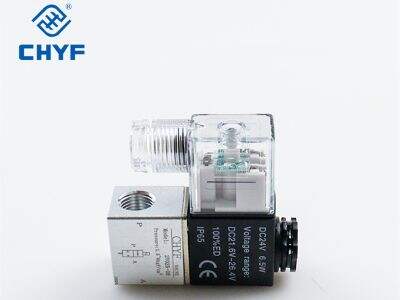How Solenoid Valves Work?
Solenoid Valves — Determined as small switches, these open and close automatically to regulate the flow of liquid or forces in a circuit. Passing electricity to the solenoid valve powers a magnetic field that moves a metal plunger in the valve. When this movement occurs, the CHYF three way solenoid valve will open or close and this will permit flow or stop flow of the liquid / gas. Imagine turning a faucet on and off but instead with electricity.
Five most prevalent Solenoid valve malfunctions and ways they can be avoided:
Obstructions: The valve can also become clogged up with debris or dirt, so that it will jam and not operate. Use clean fluids and a filter to catch any particles before they get through the valve.
Dripping and leaks: The valve that flushes the toilet may not be closing properly and letting water continue to run into the bowl. Look for any loose connections or damaged seals and replace those as necessary. Checking the valve periodically for leaks can prevent this problem.
Burn out the coil: The coil of a solenoid valve will burn out if it overheats. This can be due to over usages of valve or high voltage. Do not overuse the valve to avoid coil burnout, and make sure that you are providing the right voltage for your valve.
Sticking — The plunger inside of the valve can occasionally stick, which prohibits the opening and closing of it. Regularly lubricate the moving parts of the valve to avoid sticking, and ensure they are clean.
Problems with power: Since the solenoid valve needs electricity to activate, a failure in the electrical system that provides its power may prevent it from working at all. Hopefully a you did check the power source and wiring correctly so that all LEDs are connected properly. You should also use surge protector to avoid electrical problems.
How to Properly Maintain Solenoid Valves — Keep Them Running Longer
Regular maintenance will help to your keep solenoid valves running well across effect. Here are a few methods you can apply to increase your solenoid valves long-life.
Regularly clean the valves to eliminate deposits of debris and dirt that could block it.
Inspect for leaks and change damaged seals or any leaky connections.
Lube the valve spindle (not too, much!) so it doesn´t bind.
Check the electrical connections and voltage before replacing the unit.
Only use the solenoid valve when absolutely necessary to avoid overheating and frying the coil.
Solenoid Valve Diagnostics Tips
If you have a problem with your solenoid valve, to diagnose the real cause of this, some troubleshooting tips are below:
If you block the valve or have a leak.
Validate the electrical connections and voltage up to the valve.
Inspect coil for burn out.
Listen for any strange noises or vibrations from the valve
If all of those fail, refer to the manufacturer's manual for troubleshooting steps by CHYF pneumatic solenoid valve model.
Why Should You Inspect and Clean Your Solenoid Valves On Regular Basis?
For good Solenoid Valve performance, monitoring and cleaning periodically should be done. You can help to avoid valve failures such as blockages, leaks, and sticking through ensuring your valves are kept clean and well-maintained. It can also maximize the life of your solenoid valves, keep them running as they should and prevent unwanted emergency trips which are costly in terms of wasted time and production. But keep in mind, keeping up with a small amount of maintenance can help your solenoid valves stay operational for longer.
In summary, the performance of solenoid valves is guaranteed only when you know how to prevent common failures by understanding their working. With the right maintenance, troubleshooting and regular checking system, your solenoid valves may even outlast it and continue working smoothly for longer. This will ensure that your CHYF low cost solenoid valve are in prime working condition for years to come.


